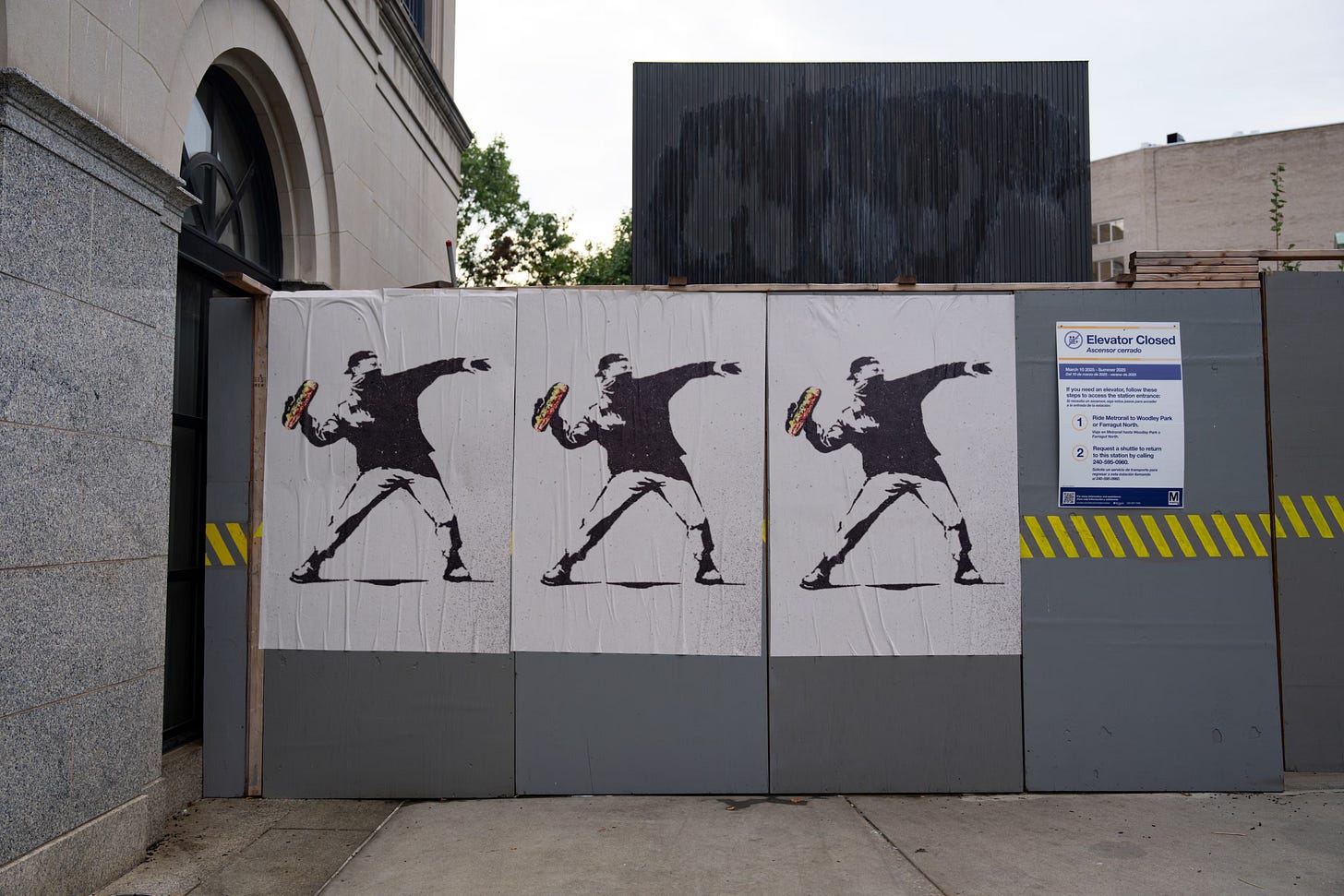The Psychology of Power Imbalances
What Happens to Us When Power Is Gained, Lost, or Abused
Welcome back, friends. Thank you all for being here, especially my paid subscribers, who make it possible for me to keep throwing ideas into the world. If you’d like to join them and get all the essays in full, upgrade your subscription here. When you become a paid subscriber, the paywall magically disappears, and a smile appears on my face.
On August 10, Sean Charles Dunn, a 37-year-old (now) former (because he got fired after the incident) Justice Department paralegal, stepped out of a Subway in the way of Customs and Border Patrol agents marching in Washington, D.C., during a militarized federal law enforcement surge. Not too pleased with the situation, he sandwich bombed one of the agents, yelling “Fascists!” and “I don’t want you in my city!” before fleeing.
Clearly in better shape than the officers, he outran them. The video went viral. He became a folk hero in an instant, expressing the frustrations of his fellow local residents. Later, he wanted to turn himself in, but was told not to by Homeland Security, just to find himself shortly after surrounded by a SWAT team and DHS video cameras documenting his arrest as a lesson to anyone interested in opposing the Trump Administration’s takeover of D.C.
Trump-installed DC US Attorney Jeanine Pirro gleefully stated that he’s been charged with a felony for assaulting a federal officer. Sadly, for her, federal prosecutors failed to convince a grand jury to indict Sean. A rare rejection, one that even legal experts call statistically improbable. He’s free to go and have another sandwich.
Dunn’s act exemplifies the raw reactivity of the disempowered, fueled by perceived authoritarian overreach. After all, D.C. residents face a no-win situation of either watching militarized forces stomping around their neighborhoods or standing up to them and risking an even bigger crackdown,
How would you feel standing face-to-face with an armed-to-the-teeth, masked federal agent?
I remember standing face-to-face with one. He wasn’t masked, though. And I was in Honduras at the airport, passing through on my way to the island of Roatan. Looking down at my text messages on my way to the transfer gate, I literally collided with an army-like security guard. He didn’t move. Gave me a stone-cold stare. Shivers ran down my spine.
I remember thinking, “Thank God, we don’t have THIS in the US!.” Fast forward 15 years. That camo-wearing, automatic rifle-carrying security guard looked like a GI Joe compared to what’s walking on the streets of D.C.
That moment in Honduras stuck with me because it showed how much power lives in symbols — a uniform, a weapon, even just a stare. Social psychologists have studied this for decades, and the findings are chillingly consistent.
So, I thought it was time to discuss what psychologically happens to people (on both sides) in situations of power imbalances, when power is lost, gained, or abused. Because, well, we are in uncharted territory, but we have plenty of research and historical precedents to tell us what humans do in such situations.
First, if you have a chance, watch this video and keep it in mind when you read, or come back to it after. It’s the video that inspired this essay.



